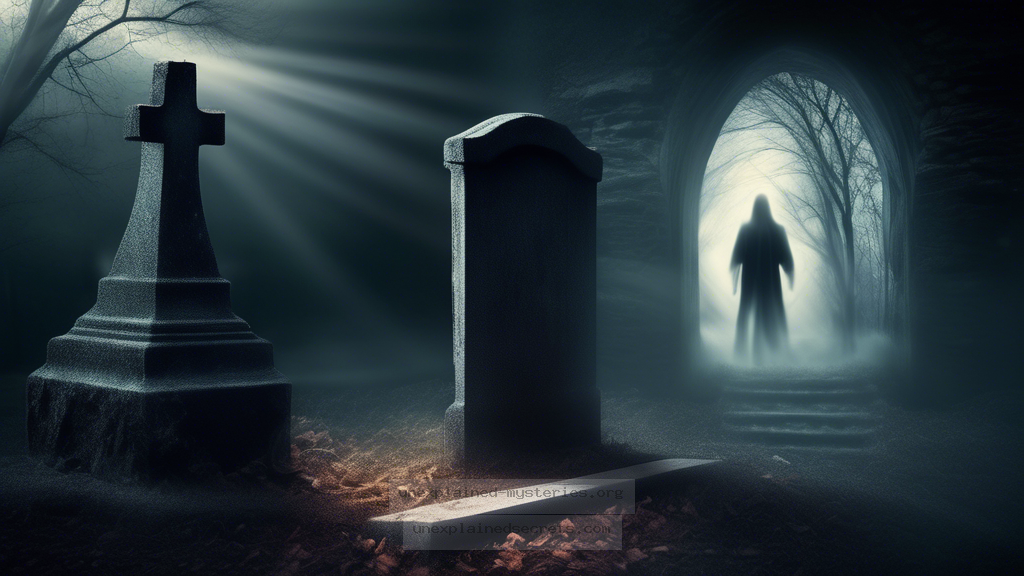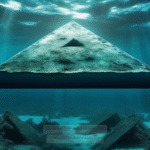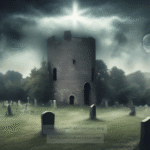What Lies Beyond the Grave? Exploring the Enigmatic Phenomenon of Near-Death Experiences
What Lies Beyond the Grave? Exploring the Enigmatic Phenomenon of Near-Death Experiences
Near-death experiences (NDEs) have captivated humanity for centuries, igniting intense debates and investigations into the nature of consciousness and the possibility of an afterlife. This intriguing phenomenon raises profound questions about what happens when we teeter on the brink of death. Are these experiences merely hallucinations, or do they provide a glimpse into an existence beyond our physical realm? Understanding NDEs is essential not only for those seeking answers about life after death but also for scientists and scholars attempting to unravel the mysteries of consciousness and human perception. In this post, we will delve deep into the history, theories, and implications of near-death experiences, shedding light on this compelling mystery.
The Historical Context of Near-Death Experiences
The concept of near-death experiences isn’t new; it can be traced back through various cultures and religions. Ancient texts from civilizations such as the Egyptians and Greeks describe experiences akin to modern NDEs. One of the earliest documented cases is found in the Tibetan Book of the Dead, which outlines the journey of the soul after death. Throughout history, NDEs have been interpreted through different lenses, often reflecting the spiritual and cultural beliefs of the time.
In the 20th century, interest in NDEs surged, particularly after Dr. Raymond Moody published “Life After Life” in 1975. Moody’s work provided a framework for understanding the common elements of NDEs, such as the sensation of floating outside the body, moving through a tunnel, encountering bright lights, and experiencing a review of one’s life. These accounts have since become a subject of scientific scrutiny and philosophical debate, fostering a growing field dedicated to the study of consciousness and the afterlife.
Core Concepts and Theories Surrounding NDEs
Several core concepts underpin the study of near-death experiences. Central to these is the idea of consciousness existing independently of the brain. This challenges the materialistic view that consciousness is solely a product of neurological processes. Researchers have proposed various theories to explain NDEs, including:
- Physiological explanations: Some scientists suggest that NDEs are the result of brain chemistry changes during trauma or oxygen deprivation, leading to hallucinations.
- Psychological theories: Others argue that NDEs are a defense mechanism, a way for the mind to cope with the trauma of dying.
- Spiritual interpretations: Many individuals who have had NDEs report profound spiritual insights, leading to beliefs that these experiences offer a glimpse of an afterlife.
Each theory presents a different perspective on NDEs, but the recurring elements across many accounts suggest that there may be more to these experiences than can be explained merely by biology or psychology.
Documented Cases: Real-World Examples of NDEs
Numerous documented cases of near-death experiences provide compelling evidence for the phenomenon. One notable example is the case of Dr. Eben Alexander, a neurosurgeon who experienced a profound NDE while in a coma due to bacterial meningitis. In his book, “Proof of Heaven,” he describes a vivid journey through a mystical realm, despite having no brain activity during his coma. His account has garnered significant attention, as he was a medical professional who had previously dismissed NDEs as mere hallucinations.
Another striking case is that of Pam Reynolds, who underwent a complicated brain surgery in 1991. During the operation, her brain activity was flat-lined, and she experienced an NDE where she reported detailed observations of the surgical procedure, including conversations and instruments used, despite being clinically dead at the time. Her case has been extensively studied and remains a pivotal reference point in NDE research.
Notable Cases of NDEs:
- Dr. Eben Alexander – “Proof of Heaven”
- Pam Reynolds – documented surgical NDE
- Colton Burpo – “Heaven is for Real”
The Scientific Community’s Response to NDEs
The scientific community remains divided on the interpretation of near-death experiences. While some researchers advocate for a more open-minded approach to studying NDEs, others remain skeptical, attributing these experiences to brain function and psychological responses. The lack of empirical evidence supporting the existence of an afterlife has led many scientists to approach NDEs with caution, often dismissing them as anecdotal.
However, a growing body of research aims to study the phenomenon more rigorously. Organizations such as the International Association for Near-Death Studies (IANDS) facilitate research and provide a platform for individuals to share their experiences. Studies have indicated that NDEs can lead to significant changes in individuals’ lives, including increased compassion, a diminished fear of death, and a deeper sense of purpose.
Common Misconceptions About Near-Death Experiences
Despite the growing interest in near-death experiences, several misconceptions persist. Here are a few notable ones:
- NDEs are always positive: While many accounts are uplifting, some individuals report distressing experiences during their NDEs, often described as “hellish.”
- All NDEs are the same: Although certain elements are common, NDEs can vary significantly based on individual beliefs and cultural backgrounds.
- NDEs prove the existence of an afterlife: While many interpret their experiences as evidence of life after death, skeptics argue that personal beliefs heavily influence these interpretations.
Key Misconceptions:
- NDEs are only positive experiences.
- All NDEs share the same characteristics.
- NDEs definitively prove an afterlife exists.
Investigation and Study of Near-Death Experiences
For those interested in investigating NDEs, several best practices can guide the process. First, approaching the subject with an open mind while remaining critically analytical is essential. Consider the following steps:
- Gather testimonies: Collect accounts from individuals who have experienced NDEs, ensuring to document their backgrounds and contexts.
- Analyze patterns: Look for commonalities among experiences, such as life reviews, encounters with deceased loved ones, or feelings of peace.
- Consult experts: Engage with researchers in psychology, neurology, and spirituality to gain diverse perspectives on NDEs.
- Utilize technology: Employ tools like brain imaging and physiological monitoring during near-death scenarios to gather data.
By following these practices, investigators can contribute to a more comprehensive understanding of NDEs, pushing the boundaries of what we know about consciousness and existence.
Future Developments in NDE Research
The study of near-death experiences is a rapidly evolving field. Ongoing research aims to better understand the brain’s role during critical situations and how consciousness may extend beyond physical existence. Advances in technology, such as neuroimaging and artificial intelligence, promise to provide new insights into the nature of consciousness and the phenomenon of NDEs.
Moreover, as societal attitudes toward spirituality and science continue to shift, interdisciplinary collaborations between neuroscientists, psychologists, and spiritual leaders may yield groundbreaking discoveries. The dialogue surrounding NDEs could potentially reshape our understanding of life, death, and what lies beyond.
Conclusion: The Mystery of Near-Death Experiences
Near-death experiences remain one of the most compelling mysteries in the realm of the paranormal, challenging our perceptions of life and death. With deep historical roots, a myriad of documented cases, and ongoing scientific inquiry, NDEs continue to intrigue and inspire both believers and skeptics alike. While there is still much to learn, the exploration of these experiences invites us to question the very nature of consciousness and the possibility of an existence beyond our earthly lives. As research progresses, we may one day uncover the truth behind what lies beyond the grave, offering solace and understanding to countless individuals grappling with the mysteries of mortality.
Other Articles
Recent Posts
- What Happened to Flight MH370? The Conspiracy Theories That Still Haunt Us
- What Secrets Lurk Within the Walls of the Infamous Trans-Allegheny Lunatic Asylum?
- What Evidence Supports the Existence of Bigfoot in the Pacific Northwest?
- What Happened to the Indus Valley Civilization? Unraveling the Mysteries of Ancient Urban Life
- Can Telepathy Be Scientifically Proven Through Laboratory Evidence?







